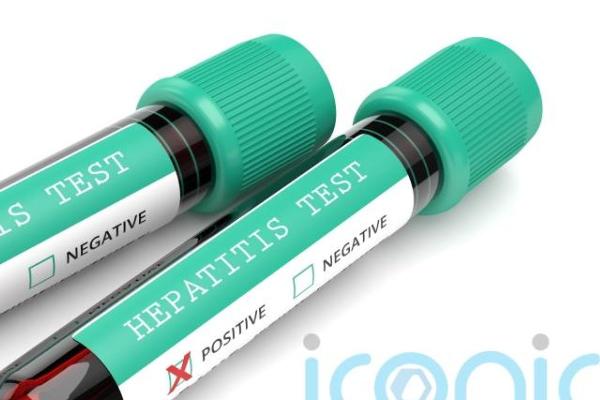Understanding Heart Attack Symptoms: Early Detection and Prevention

Strong 8k brings an ultra-HD IPTV experience to your living room and your pocket.
Understanding Heart Attack Symptoms: Early Detection & Prevention | Healthcare 360 Magazine
Heart disease remains the leading cause of death globally, claiming millions of lives each year. Among various heart conditions, heart attacks, also known as myocardial infarctions, are particularly alarming due to their sudden onset and potentially fatal consequences. Recognizing heart attack symptoms is crucial for early intervention and increasing the chances of survival. This article delves into the nature of heart attacks, the importance of identifying heart attack symptoms, and measures for prevention and early detection.
What is a Heart Attack?
A heart attack occurs when the blood flow to a part of the heart muscle is blocked, often by a buildup of fat, cholesterol, and other substances, which form a plaque in the coronary arteries. This blockage can damage or destroy part of the heart muscle. Immediate medical attention is vital to restore blood flow and minimize heart damage.
Common Heart Attack Symptoms
Heart attack symptoms can vary widely between individuals and may not always be dramatic. However, there are several common signs to watch for:
Understanding Heart Attack Symptoms: Early Detection & Prevention | Healthcare 360 Magazine
Chest Pain or Discomfort: This is the most common symptom of a heart attack. The pain can feel like pressure, squeezing, fullness, or pain in the center or left side of the chest. It can last for a few minutes or go away and come back.
Upper Body Pain: Discomfort or pain can radiate beyond the chest to the shoulders, arms, back, neck, teeth, or jaw. This can be sudden or gradual and is often overlooked as a symptom of a heart attack.
Shortness of Breath: This can occur with or without chest discomfort and is a common sign of a heart attack, especially in women.
Cold Sweat: Breaking out in a cold sweat for no apparent reason can be a heart attack symptom.
Nausea or Vomiting: These symptoms are more common in women but can also be present in men experiencing a heart attack.
Lightheadedness or Dizziness: Feeling lightheaded or dizzy can be a sign that the heart is not pumping blood effectively, which can indicate a heart attack.
Fatigue: Unusual or extreme fatigue can be an early heart attack symptom, especially in women. This symptom might appear days or even weeks before other heart attack symptoms.
Gender Differences in Heart Attack Symptoms
While both men and women can experience chest pain, women are more likely to have atypical heart attack symptoms such as shortness of breath, nausea, and back or jaw pain. This difference can sometimes lead to misdiagnosis or delayed treatment in women, making awareness and education about these variations crucial.
Recognizing Heart Attack Symptoms in Different Populations
Elderly Individuals
Heart attack symptoms in older adults may be more subtle or atypical. Symptoms such as mild chest discomfort, shortness of breath, or fatigue can be mistaken for normal aging processes or other medical conditions. It’s important for caregivers and family members to be vigilant and seek medical evaluation for any unusual or persistent symptoms.
Diabetics
Understanding Heart Attack Symptoms: Early Detection & Prevention | Healthcare 360 Magazine
People with diabetes are at a higher risk of heart disease and may experience “silent” heart attacks, where symptoms are minimal or absent. Diabetic neuropathy can dull the sensation of chest pain, making it essential for diabetics to have regular cardiovascular check-ups and maintain strict control over their blood sugar levels.
Young Adults
Though heart attacks are less common in younger adults, they can still occur, particularly in those with risk factors such as smoking, obesity, high cholesterol, or a family history of heart disease. Young adults might dismiss symptoms due to a perception of being too young for a heart attack, which can delay critical treatment.
The Importance of Early Detection
Early detection of heart attack symptoms can significantly improve outcomes. Rapid treatment can restore blood flow to the heart muscle, reducing the amount of damage. Here are steps to take if heart attack symptoms are suspected:
Call Emergency Services: Immediately call emergency services if you or someone else exhibits heart attack symptoms. Do not attempt to drive yourself to the hospital.
Chew Aspirin: If advised by a healthcare professional, chew a regular-strength aspirin (325 mg) while waiting for emergency personnel. Aspirin can help reduce blood clotting and improve blood flow to the heart.
Stay Calm and Still: Try to remain calm and sit or lie down to avoid straining the heart.
Prevention of Heart Attacks
Preventing heart attacks involves addressing modifiable risk factors and adopting a heart-healthy lifestyle. Here are some strategies to reduce the risk of a heart attack:
Healthy Diet
A diet rich in fruits, vegetables, whole grains, lean proteins, and healthy fats can improve heart health. Limiting intake of processed foods, salt, sugar, and saturated fats is also crucial. The Mediterranean diet, for instance, is known for its heart-protective benefits.
Regular Exercise
Engaging in regular physical activity helps maintain a healthy weight, lowers blood pressure, and improves cholesterol levels. Aim for at least 150 minutes of moderate-intensity exercise or 75 minutes of vigorous exercise per week.
Smoking Cessation
Smoking is a major risk factor for heart disease. Quitting smoking significantly reduces the risk of a heart attack and improves overall cardiovascular health.
Managing Stress
Understanding Heart Attack Symptoms: Early Detection & Prevention | Healthcare 360 Magazine
Chronic stress can contribute to heart disease. Techniques such as mindfulness, meditation, yoga, and deep breathing exercises can help manage stress levels.
Regular Health Screenings
Regular check-ups with a healthcare provider can help monitor risk factors such as high blood pressure, high cholesterol, and diabetes. Early detection and management of these conditions are key to preventing heart attacks.
Conclusion
Heart attacks are life-threatening events that require immediate medical attention. Understanding and recognizing heart attack symptoms can save lives by ensuring timely treatment. While heart attack symptoms can vary between individuals and populations, common signs such as chest pain, shortness of breath, and upper body discomfort should never be ignored. Preventive measures, including a healthy diet, regular exercise, smoking cessation, stress management, and regular health screenings, play a crucial role in reducing the risk of a heart attack.
Awareness and education about heart attack symptoms and preventive strategies can empower individuals to take proactive steps in safeguarding their heart health. By prioritizing heart health and seeking immediate medical care when symptoms arise, we can reduce the devastating impact of heart attacks and improve overall cardiovascular well-being
Note: IndiBlogHub features both user-submitted and editorial content. We do not verify third-party contributions. Read our Disclaimer and Privacy Policyfor details.







